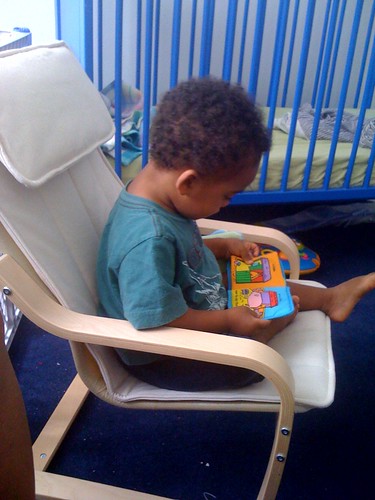Note: This is the third in a series of articles on Discipline Methods introduced in Discipline and Parenting Style. If you missed the first two, I recommend that you read them first- Discipline Methods: Communication and Role Modeling and Discipline Methods: Merits and Demerits. This series on discipline is published every Friday so please check back regularly or subscribe via email or follow us at Twitter or Facebook (buttons are at the bottom right corner as well).
This segment of the Discipline Method series is beneficial to both parent and child. Time-out is for a child who is having a difficult time controlling his emotions and behaviors. It is not a punishment but a special time and opportunity to calm oneself, think and regain self control. There are many ways to effectively implement time-outs:
Room Time-Out: The principle is the same as above but this time, the child is required to stay in his or her room. Giving a person time to be alone and chance to reflect in the privacy of his room, calms the emotions down. This is then the time he can come out of the room. The required isolation will also make him realize that the behavior was undesirable and something should be done to correct it. Again, discuss the issue after the time-out. This is applicable to all ages if the child is not violent enough to hurt himself when left alone.
Situation Time-Out: Taking time away from a bad situation calms the child and prevents worse misbehavior. When a child gets mad because a sibling or a playmate broke his toy or crumpled his artwork and would not listen to words, then it is better to pull him out of the situation to prevent him from getting back at and hurting the offender. You can take him for a walk or make him listen to good music to bring his composure back. Give him another activity to work on or read a book with him. Explain the importance of emotion control despite being offended when he is ready to listen.
Peace Corner: Designate a corner in your house where the child can associate peace and tranquility. Peace corners are preferably decorated with plants and flowing water. Put the child in that corner when he is angry to help him re-center himself. Fighting siblings can also reconcile in this corner. Be sure to discuss the issues when emotions are relaxed. Having a peace corner is also beneficial to adults.
Reverse time-out is for parents who feel their emotions are getting out of control. If you are too angry, it is better to ask for a few minutes alone to calm yourself down. Hide in your bedroom or bathroom, freshen up and take a few breathing exercises. Come out when you have a better mood to engage in conversations and ready to deal with your child’s misbehavior rationally. Never deal with a child’s misbehavior when you are in a fighting mode. You might inflict unnecessary pain, physical or emotional, to your child that you will regret later. Reverse time-out is also effective in ignoring attention-seeking behaviors of your child. When the child notices that he is not getting any attention because his mother is currently indisposed, he’ll eventually calm down.
NEXT: Discipline Methods: Prevention and Tolerance
If you like this article, please consider sharing it with your friends. You can conveniently share via email, twitter, etc. using the share buttons below. Thanks.


















Hi! I'm visiting from MBC. Great blog.
Thanks for the visit and the comment Veronica. I'm pleased to meet you :)